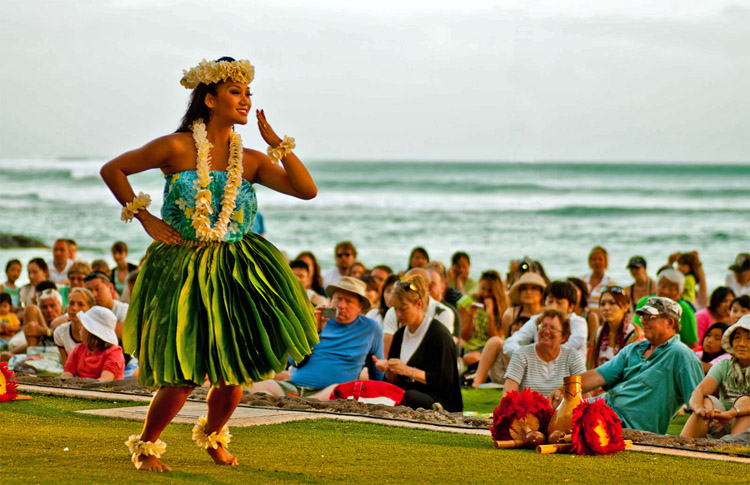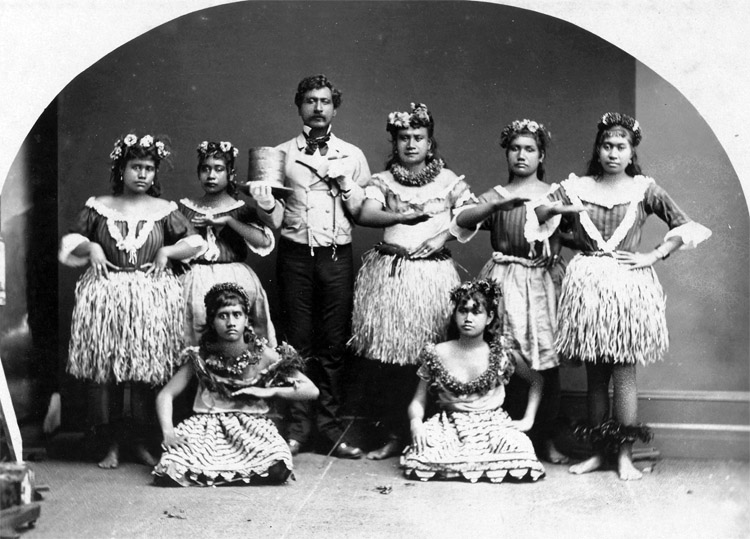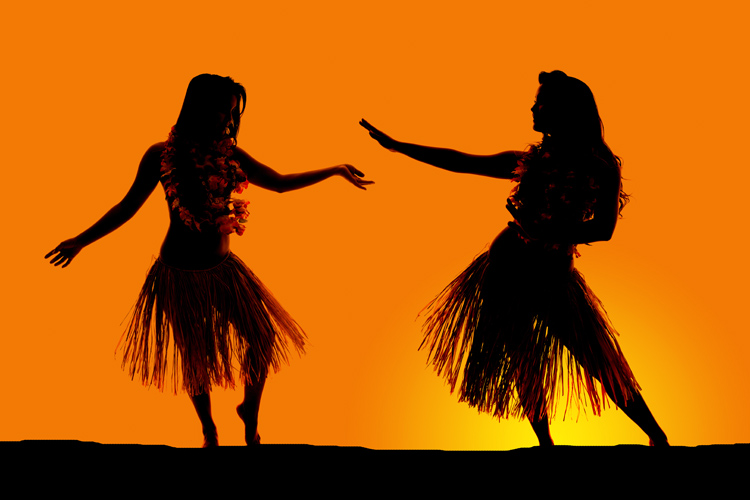The Hula is a complex dance developed by the Polynesians who originally settled in Hawaii. The dance is accompanied by a song ("mele") or chant ("oli"), which tells stories and traditions embedded in the Hawaiian culture.
According to historians, the dance - named "Ha'a" - was originally performed for Pele, the goddess of volcanoes, fire, wind, and lightning, and the creator of the Hawaiian Islands.
Ancient Hula is played using traditional instruments, while the Western-influenced version features the ukulele, the guitar, and the double bass.
The Hula dance may be performed standing and/or sitting.
The classic wavy hand movements and smooth and fluid body gestures have multiple meanings: the swells and waves of the oceans, the swaying trees, or even human emotions.
The Hawaiian dance has had many goals. They were performed for entertainment purposes and to please royalty, but they also had religious and spiritual goals.

A Barefoot Dance
The Hula of Hawaii can be performed by female and male dancers.
Girls and women wear several costumes depending on the occasion, but most items are grass skirts, flowered shirts, wrist and ankle bracelets, and leis.
In the past, women danced topless, but Western etiquette changed their habits. Men usually wear a loincloth ("malo") or trousers and may pick a shirt or dance shirtless.
One rule has never changed: the Hula dance is always done barefoot.
You can watch Hula dancers performing at luaus, surfing competitions, conferences, hotels, and festivals everywhere, from Kauai to the Big Island.
The American missionaries who arrived in the Hawaiian Islands in 1820 immediately denounced it as a heretic, ungodly dance.
Ten years later, influenced by the religious lobby, Queen Ka'ahumanu prohibited its public performance.

A Timeless Tradition
But the truth is that the ritual never died.
Sixty years later, Princess Lili'uokalani, the last reigning monarch of the Kingdom of Hawaii, revived the traditional dance, and the Hula became a symbol of the archipelago until today.
Learning the exquisite ritual requires dedication and passion, and the Merrie Monarch Festival, the most prestigious hula contest in Hawaii, crowns the Miss Aloha Hula every year.
"I try to instill in my students that the Hula is more not so much a physical thing, but more of a mental and spiritual thing," Kumano Palani Kuala, Hula instructor, once told National Geographic.
"For them, the dancing means very little because Hawaiians today don't speak the language. So, what I try to do is to bring to mind the reality that they see today.
Both modern ("auana") and traditional Hula ("kahiko") coexist today and, alongside Aloha, help spread and share the spirit of Hawaii and its native cultural roots.
